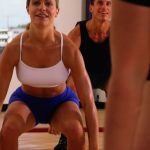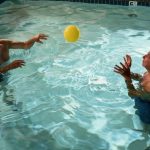
You don’t have to go to the gym for a strength-training workout. With these three moves, your own body weight provides the resistance needed to develop key muscles. Start with the classic wall sit. Press your back into a wall and slide it down the wall as you walk your feet out in front of you, bending at the knees. Your thighs should be parallel to the floor and make right angles with your calves. Try to keep shoulders relaxed. Hold for up to 90 seconds, return to standing and repeat. For a challenging twist, once you’re in the wall-sit position, straighten your right leg out in front of you, holding it parallel to the floor for five seconds, return and switch legs. As the exercise becomes easier to do, increase the number of times you alternately straighten legs while holding the sit. Jumping jacks, an old standby, are still effective and offer a cardio workout as well. Here’s how to make them more fun and more challenging: Start by standing with feet together, arms at your sides and then jump out with feet as wide apart as is comfortable as arms lift out to the sides and up to shoulder-level. When you jump back in, cross your right arm over your left at mid-chest and cross your right leg over your left leg. Jump… read on >



































